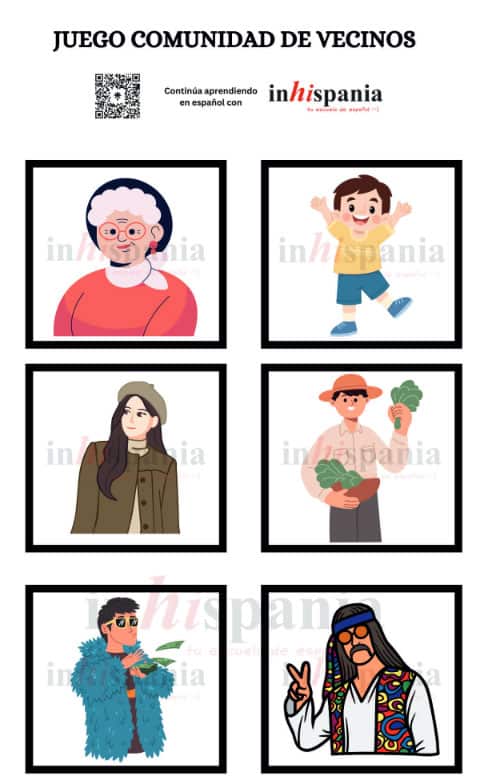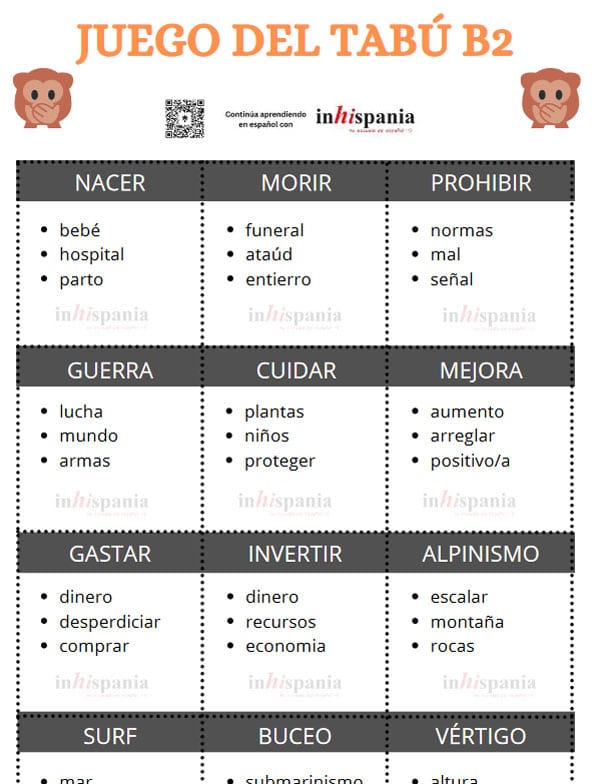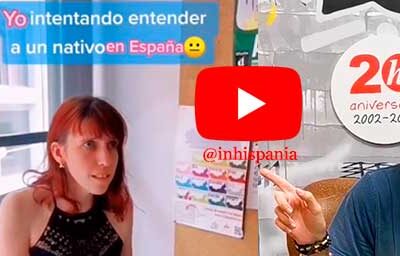In the world of teaching Spanish as a foreign language (ELE), creativity and innovation are essential for maintaining students’ interest and progress. Since its beginnings, Inhispania school has stood out for its innovative approach, using educational materials in its classes that not only make learning Spanish easier, but also more enjoyable and effective. Today, we want to highlight one of the most in-demand resources among ELE teachers: infographics, which are undoubtedly a fundamental tool in our classrooms.
Infographics: A Visual and Didactic Resource
Inhispania’s infographics are designed to offer visually appealing and pedagogically solid learning. These tools not only present information clearly and concisely, but also include a variety of exercises that promote interaction and the practical use of the Spanish language.
One of the best things is that these infographics for ELE classes are easily accessible on Inhispania’s Pinterest account, completely free of charge. This visual platform allows access to these resources from anywhere and at any time. You just have to visit Inhispania’s Pinterest account and discover a wide collection of infographics ready to be used in your classes or for your personal study. We encourage you to follow the account, as it is regularly updated with new infographics.
Infographics are increasingly recognized as effective tools in language teaching because they provide bite-sized, visually supported information, making them especially useful for novice learners and for introducing new vocabulary and cultural content in engaging ways
ACCESS INHISPANIA’S INFOGRAPHICS ON PINTEREST
Conversation Exercises
One of the great advantages of using infographics in the ELE classroom is that they include conversation exercises for pairs or groups. These exercises are designed to encourage active communication and real-life language practice. Students can work in pairs or small groups, discussing a variety of topics ranging from everyday situations to debates on more complex issues. This not only improves their language skills but also helps them gain confidence when speaking Spanish.
We can use them to expand food-related vocabulary at beginner levels A1-A2.
Grammar Practice
Inhispania’s infographics also include specific grammar practice exercises, carefully designed to reinforce the structures presented and help ELE students internalize the rules in a practical and contextualized way. Through fill-in-the-blank activities, verb conjugation, and sentence-building exercises, students can practice and consolidate their knowledge in a dynamic and engaging manner, making it easier to learn and retain Spanish as a foreign language. These infographics are suitable for all levels, although they are especially practical at beginner levels, where a clear and visual understanding of grammar rules is essential for establishing a solid foundation in Spanish learning. As a reminder, here’s how we use them for practicing the Present Indicative.
Games and Activities
Playful learning is another essential component in Inhispania’s materials. The infographics often include games and activities that turn learning into a fun experience. These games can range from simple question-and-answer contests to more complex activities such as role-plays and simulations. By incorporating game elements into learning, students can enjoy the educational process more while naturally and entertainingly improving their language skills. Here we share the fun “Neighborhood Community” game (with instructions for use at A2 level), where students have to find out who the murderer is, as well as a version of the well-known “Taboo” game to practice definitions and expand the vocabulary of our B2-level ELE students.
We also recently discussed how we can use them to do ABC exercises for vocabulary practice.
Variety of Topics and Content
With ELE infographics, we can cover a wide range of topics and content, allowing students to explore different areas of interest while learning the language. From Spanish culture and traditions to current events and practical everyday situations, these infographics provide a rich and varied context that enhances the learning of Spanish. For example, students can learn about Spanish holidays as well as recent and relevant events that help connect language learning with the real world. In addition, these infographics cover everyday situations, such as going shopping, ordering food in a restaurant, or describing daily routines, offering a practical approach that facilitates the immediate application of learned vocabulary and grammar structures. The diversity of topics not only maintains students’ interest and motivation, but also gives them a deeper and more comprehensive understanding of the Spanish language and culture.
Here we share one we have created for students who have just arrived in Madrid, to help them get familiar with the city, adapt quickly to their new environment, and discover their preferences. You can use it with your A2-B1 level students or, even better, recommend that they come study with us in Madrid for a full immersion experience and leave everything in our hands 🙂.
Have you had the opportunity to use Inhispania’s materials in your classes? We would love to know which activities you have found most useful and entertaining. Share your experience with us in the comments! Also, don’t forget to follow us on Pinterest to access all our infographics and enrich your ELE classes with new, dynamic, and visual materials and resources.





